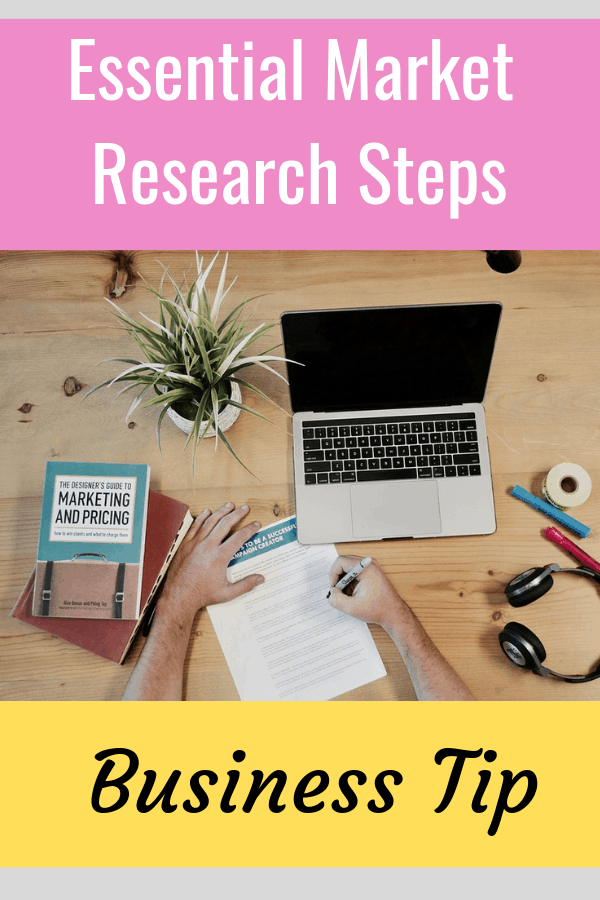Marketing is a hugely integral part of any business, and in the modern day it is more important for us than ever that we are able to understand our audience and do everything that we can to engage with the and keep them interested. Today we are looking at one particular part of the marketing process which can allow us to build and target our plans to the right people at the right time.

Digital Marketing has many important elements which come together to help us appeal to our audience and make them choose us over other brands. One of the most important steps of marketing has to be market research, and this is what we will be exploring in more detail today.
Market research is a form of marketing which involves delving into the world and researching as much information as we can about the current market, the competitors we fight against, and also the audience we plan to sell too. By researching the markets and understanding more about them we can gain an insight into how best we can market ourselves to our audience. For example we could research and find which age group or gender will be the focus of our marketing and this can narrow down the methods we use to reach them in a meaningful way.
The methods of market research involve a lot of steps, and if you want to build a real world understanding of how you fit into your target market, you need to follow a particular set of steps which will bring you the information you need. Today we are sharing some of these steps to help you create the ideal marketing plan to keep your audience coming back for more.
Step 1: What is your aim? Outline exactly what you plan to achieve from carrying out market research and think about how you are going to achieve your goal.
Step 2: Define your market. Within the wider world, where does your company sit? Define your niche and your top competitors in the business world.
Step 3: Check out the competition. It’s time to analyse your competitors by checking to see what kind of online presence they have; social media, website etc… and followers. This allows you to see the potential audience you will have in the future.
Step 4: Identify your target audience. Who wants to buy your products or use your services? The audience you want to target will have an impact on the way you approach marketing. For example a cleaning product might be targeted a homeowners and parents.
Step 5: Understand audience behaviour. Take some time to find out what kind of interests, demographics and location your audience sits within, you can use this for targeted marketing later.
Step 6: Evaluate your reputation. Check online to see whether you have any mentions from reviews or social media which will have an impact on your reputation. It is important to know how people see you because you can then make changes accordingly to improve it.
Step 7: Ask the audience. A helpful way to see what an audience thinks about a product or service is to ask them about it. Send out an email newsletter or create a poll on social media to see what kind of products and services are more popular with your audience. This can be useful for future development too because it will allow you to adapt your business to what the public wants.
Step 8: Look for trends. Use a tool such as Google Trends (https://trends.google.com/trends/) to analyse current trends in the market to see whether you can improve your marketing tactics. Trends are important in the marketing world because they give us an insight into what the world is looking at and what they are interested in at any one time. You can type any search term into trends to see how popular it is as well as which terms specifically how up more frequently.
Step 9: Focus Group. It would be a good idea to test out a product or a service on a focus group who are unbiased and will give a real opinion of the product or service. A focus group needs to be made up of a few different types of people so that you are able to cover a larger demographic group. You can also think about showing them a few different products to get a feel for how they react to different things.
Step 10: Field Trials. During the development of a product or service it is a good idea to release the product or service to a small group to test it in the field. A good recent example of this was the Vegan Sausage Roll which was released in small areas of the UK before a wider roll out.
Step 11: Ask Employees. As well as speaking to your audience and gauging their reaction to a product or service it can be helpful for you to ask in house. Your employees will be able to give you some sound advice about a new product or a service and once you speak about this you can meet up to improve the product as a team.
Step 12: Gather and analyse data. After carrying out tests for your market research it is time to analyse the results and use them to improve your business plan. You will need to gather information in an excel spreadsheet to compare positive and negative responses, answers to polls and interviews, and this will allow you to make changes to your product plan to suit the audience you want to target.
Step 13: Use the information you have gained. This part is simple: once you have gathered information and you have the general opinion of the customer, it is time to action this in the real world.
Now that you have all of your information, you should be well on your way to building the best marketing plan you can.

This post has been written by an outside source – See disclosure policy


